As Russian Forces Intensify Assault Operations in Zaporizhzhia and Northern Belgorod, the Kremlin Demands Ukrainian Constitutional Order Be Scrapped Under the Pretense of “Denazification”
Summary of the Day — March 28, 2025
Russian President Vladimir Putin has reintensified efforts to portray the Ukrainian government as illegitimate, resurrecting his “denazification” rhetoric and demanding a UN-supervised temporary administration in Ukraine as a precondition for peace talks. This demand comes as Kyiv announced that Ukrainian, British, and French general staff representatives will meet within a week to discuss potential European troop deployments to Ukraine as part of a “reassurance force.” On the battlefield, fighting has escalated in multiple sectors, with Russia intensifying assault operations in Zaporizhzhia Oblast while Ukrainian forces have advanced 3-4 kilometers into Russia’s Belgorod region. The fragile energy infrastructure ceasefire continues to fray, with both sides trading accusations of violations. Meanwhile, Moscow has displayed its naval muscle with the launch of the nuclear submarine Perm, equipped with hypersonic Zircon missiles, as part of a plan to expand its nuclear submarine fleet through 2050.
Delegitimizing Ukraine’s Government: Putin’s Latest Peace Obstruction Tactic
Russian President Vladimir Putin has stepped up efforts to portray Ukraine’s government as illegitimate and incapable of engaging in meaningful peace negotiations. During a visit to a Russian submarine command post in Murmansk Oblast on March 27, Putin recycled his longstanding rhetoric about “Nazis” and people with “neo-Nazi views” having significant influence in the Ukrainian government.
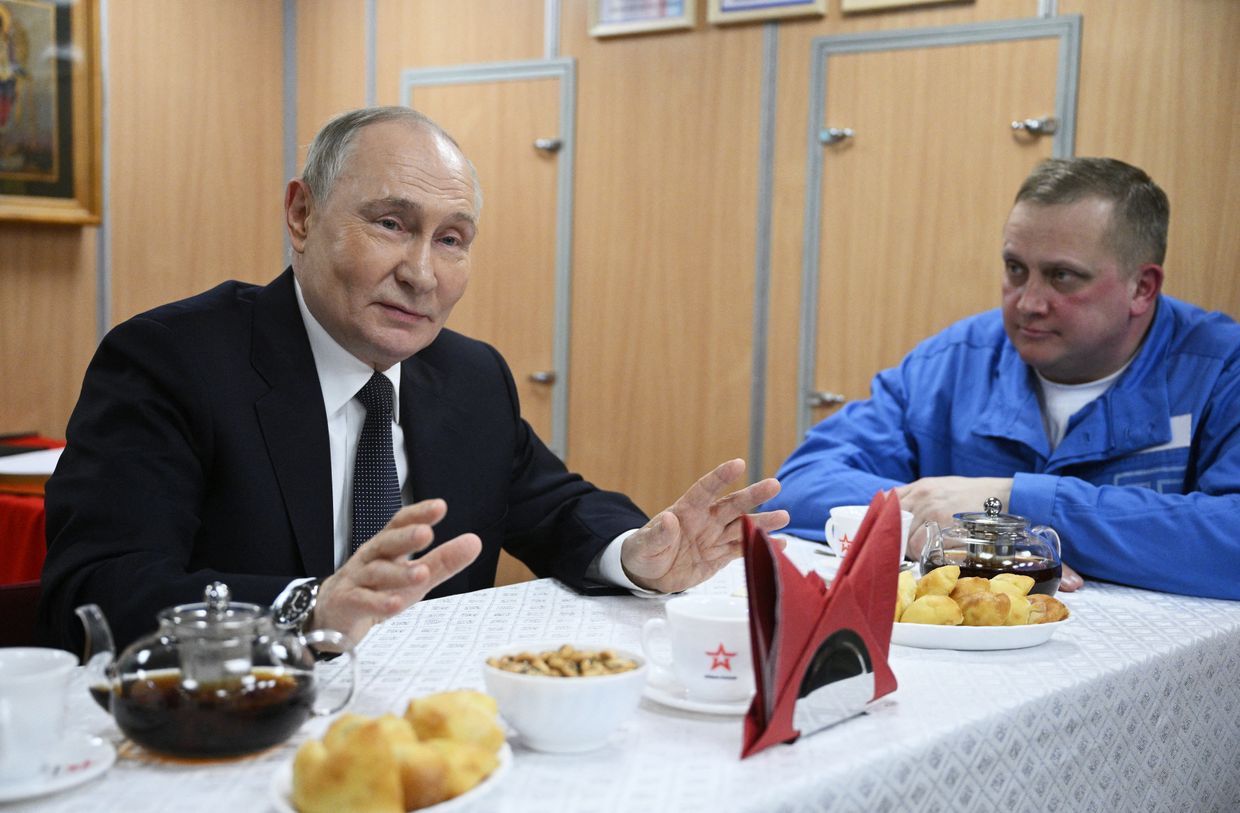 Russia’s President Vladimir Putin meets with submariners as he visits the Russian nuclear-powered submarine Arkhangelsk in Murmansk. (Kirill Zykov / Getty Images)
Russia’s President Vladimir Putin meets with submariners as he visits the Russian nuclear-powered submarine Arkhangelsk in Murmansk. (Kirill Zykov / Getty Images)
“Neo-Nazi groups” have the “actual power in their hands” in Ukraine, Putin claimed, adding that Ukrainian President Volodymyr Zelensky is illegitimate because Ukraine did not hold presidential elections in 2024. He further alleged that all Ukrainian civil authorities are therefore illegitimate since the president appoints regional officials—despite the Ukrainian Constitution explicitly prohibiting elections during periods of martial law and invasion.
Putin proposed that the United Nations (UN), United States, and European countries install a temporary administration in Ukraine that would hold democratic elections to bring to power “a viable government that enjoys the people’s trust.” This administration, he suggested, would allow Russia to “begin negotiations [with the new Ukrainian administration] on a peace treaty” and “sign legitimate documents that will be recognized throughout the world.”
The proposal was swiftly rejected by White House National Security Council Spokesperson James Hewitt, who stated that Ukraine’s governance is determined by its Constitution and its people. UN Secretary General Antonio Guterres also dismissed Putin’s proposal, affirming that Ukraine has a legitimate government that must be respected.
Root Causes and Non-Negotiables: Russia’s Maximalist Peace Terms
Putin reiterated his demand for the elimination of the “root causes” of the war in Ukraine as a precondition for a peace agreement—a reference to Russia’s initial war demands that directly contradict U.S., European, and Ukrainian efforts to achieve a just and sustainable resolution to the conflict.
The Russian leader claimed that his country is committed to ending the war but only if a peace agreement addresses these “root causes,” which senior Russian officials have repeatedly defined as NATO’s alleged violation of obligations not to expand eastward and Ukraine’s alleged violations of the rights of Russian-speaking minorities.
These demands amount to a call for full Ukrainian capitulation with the installation of a pro-Russian government in Ukraine and commitments to Ukrainian neutrality—the same demands Putin has made since before the full-scale invasion. This approach continues to hold negotiations hostage as the Kremlin attempts to extract additional concessions following the progress made in the ongoing ceasefire negotiations.
European Troop Deployments: Coalition of the Willing Takes Shape
Ukrainian, British, and French general staff representatives will meet in Ukraine within a week to discuss the potential deployment of foreign troops to the country, President Volodymyr Zelensky announced on March 28. The meeting follows a Paris summit where several European countries moved forward with plans to send soldiers to Ukraine as part of a “reassurance force” in case of a ceasefire with Russia.
According to Zelensky, the meeting will be attended by countries that “will be 100% in favor of a peacekeeping contingent on the territory of Ukraine.” “Not all of them will come, there will be a narrow circle. France, the UK, and Ukraine will definitely be there,” the president told reporters. A follow-up meeting at the level of national security advisors will take place shortly afterward.
The initiative is co-led by France and the UK, with both nations sending military delegations to discuss the “reassurance force” and the future shape of Ukraine’s army. While UK Prime Minister Keir Starmer has publicly maintained that any coalition deployment should have U.S. backing, French President Emmanuel Macron stated that it could proceed “with or without” Washington’s involvement.
This development comes as Ukraine works to finalize agreements with European nations for additional military aid shipments and expanded intelligence sharing ahead of the next Ramstein summit, scheduled for April 11 in Brussels.
Battlefield Developments: Ukrainian Advances in Belgorod, Russian Push in Zaporizhzhia
Ukrainian forces have advanced 3-4 kilometers into Russia’s Belgorod region, engaging in battles with Russian troops, according to military experts and independent analysts. Geolocated footage published on March 28 indicates that Ukrainian forces recently advanced in eastern Popovka, northwest of Belgorod City, though Russian milbloggers claimed the settlement is a contested “gray zone.”
Military expert Emil Kastehelmi of the Black Bird Group told Reuters that Ukrainian troops had penetrated Russia’s first line of defense, though he noted that their ability to launch a major breakthrough remains unlikely. The operation appears to be aimed at diverting Russian forces as Moscow intensifies efforts to push Ukrainian troops out of Kursk Oblast.
Meanwhile, Russia has intensified assault operations in the Zaporizhzhia sector, increasing pressure on Ukraine’s southern positions. “The Russians want to get as much of a head start or advance as possible in Zaporizhzhia Oblast,” said Southern Defense Forces spokesperson Vladyslav Voloshyn, noting that Russian forces have massed troops for assault operations using small infantry groups.
Ukrainian military observer Kostyantyn Mashovets stated that Russia has concentrated 70,000 to 72,000 troops, up to 320 tanks, and up to 725 armored vehicles in western Zaporizhia Oblast. This buildup includes most of the Russian 58th Combined Arms Army (Southern Military District) along with elements of the 108th Airborne Regiment, 70th Motorized Rifle Regiment, and 503rd Motorized Rifle Regiment.
Energy Infrastructure Ceasefire: Accusations and Violations
The fragile ceasefire on energy infrastructure strikes continues to fray as both sides trade accusations of violations. Ukrainian state-owned gas operator Naftogaz reported on March 28 that overnight Russian strikes damaged its gas production facilities in unspecified areas, marking the eighteenth attack on the company’s infrastructure since the start of the full-scale war.
“The enemy shelled Naftogaz Group’s facilities. This is the eighteenth combined attack on the Group’s infrastructure since the start of the full-scale war and the eighth since the beginning of this year,” the company said in a statement. Kremlin spokesperson Dmitry Peskov said Russia “reserves the right, in case the Kyiv regime does not comply with this moratorium, of course, not to comply with it either.”
On the other side, the Russian Ministry of Defense and other Russian sources claimed that Ukrainian forces conducted drone and HIMARS strikes against the Sudzha gas metering station on the morning of March 28 and targeted an energy facility in Bryansk Oblast. Ukraine’s General Staff denied the allegations, stating: “Ukraine’s Defense Forces strictly adhere to the agreements reached with partners to stop attacks on energy facilities. Fire is carried out exclusively on military targets.”
Ukraine had previously accused Russia of deliberately striking the Sudzha gas station in Kursk Oblast on March 21 to frame Kyiv. The Ukrainian military maintains that it was targeting ammunition and missile storage facilities at Engels Airbase—a legitimate military target not covered by the energy infrastructure moratorium.
Naval Expansion: Russia’s Nuclear Submarine Fleet Growth Plan
Russia plans to significantly expand its nuclear submarine fleet, with President Vladimir Putin attending the ceremonial launch of the new Perm nuclear submarine during his visit to Murmansk on March 27. Putin stated that the Perm submarine is one of Russia’s first submarines equipped with Zircon hypersonic cruise missiles and that it will begin participating in naval operations in 2026.
Putin announced that the Russian Navy is preparing a strategy for its development and the construction of surface ships and submarines until 2050. The plan includes building five more Yasen-M class nuclear submarines and three more Borei-A class nuclear submarines in an unspecified time period.
The Kremlin also appears to be renewing efforts to reorganize Russia’s five naval infantry brigades into divisions. Putin announced that the Russian General Staff had approved a program to reorganize these forces, with two brigades, including the 155th Naval Infantry Brigade (Pacific Fleet), becoming divisions in 2025, followed by two more in 2026 and the final brigade in 2027.
Ukrainian Children and Humanitarian Aid: Critical Support amid War
The fate of Ukrainian children abducted by Russia remains a critical humanitarian concern. U.S. Secretary of State Marco Rubio confirmed on March 28 that the U.S. government has not restored funding for a program documenting these abductions, despite earlier reports that short-term funding would be provided. “The program is not funded. It was part of the reductions that were made,” Rubio stated, though he added that the U.S. has secured the existing data and ensured it can be transferred “to any appropriate authorities.”
At least 19,500 Ukrainian children have been confirmed as abducted by Russia since the start of its full-scale invasion, with only about 1,200 returned to Ukraine, according to Ukraine’s Children of War database. Yale University’s Humanitarian Research Lab, which used biometric data and satellite imagery to track these abductions, reportedly lost access to its database last month after officials terminated its contract.
On a more positive note, Norway announced it will allocate 3 billion Norwegian krone ($285.6 million) for humanitarian assistance to Ukraine and Ukrainian refugees in neighboring Moldova in 2025. “Russia’s attacks on civilian infrastructure, electricity supplies, hospitals, schools and homes have continued with full force, and more and more Ukrainians are being forced to evacuate or flee their homes every day,” Norwegian Foreign Minister Espen Barth Eide said in a statement.
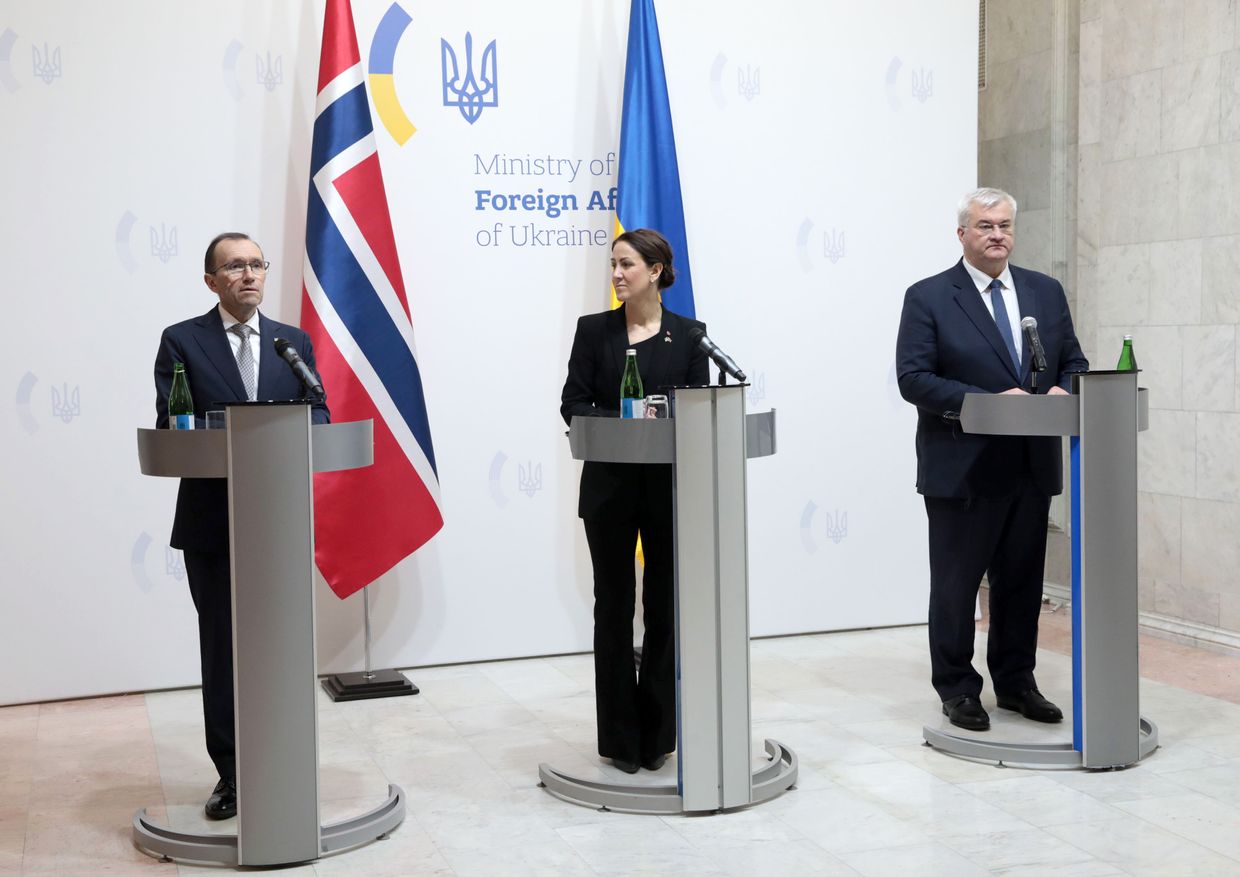 Norwegian Foreign Minister Espen Barth Eide, Norwegian Minister of Labor and Social Inclusion Tonje Brenna, and Ukrainian Foreign Minister Andrii Sybiha in Kyiv, Ukraine (Hennadii Minchenko/Ukrinform/NurPhoto via Getty Images)
Norwegian Foreign Minister Espen Barth Eide, Norwegian Minister of Labor and Social Inclusion Tonje Brenna, and Ukrainian Foreign Minister Andrii Sybiha in Kyiv, Ukraine (Hennadii Minchenko/Ukrinform/NurPhoto via Getty Images)
The humanitarian funds will be distributed among UN response efforts in Ukraine and Moldova, the International Committee of the Red Cross, the International Federation of Red Cross and Red Crescent Societies, and Norwegian and international humanitarian organizations for medical evacuations and aid.
Repatriation of Fallen Heroes: Over 900 Ukrainian Defenders Returned
Ukraine has repatriated the bodies of 909 soldiers who died fighting against Russia’s full-scale invasion, the Coordination Headquarters for the Treatment of the Prisoners of War reported on March 28. These were soldiers who fought in the Kurakhove, Pokrovsk, Bakhmut, Vuhledar, Luhansk, and Zaporizhzhia directions, with some bodies returned from Russian Federation morgues.
The effort to retrieve the fallen soldiers was conducted in collaboration with several government and military agencies, including the Security Service of Ukraine, the Interior Ministry, the State Emergency Service, the Armed Forces, the Ukrainian Parliament Commissioner for Human Rights, and the Office for Missing Persons in Special Circumstances. The headquarters also thanked the International Committee of the Red Cross for their assistance.
This marks another difficult milestone in Ukraine’s struggle, with President Zelensky previously stating that over 46,000 Ukrainian soldiers have been killed on the battlefield since the start of Russia’s full-scale invasion in February 2022, with nearly 380,000 injured. The BBC and the independent outlet Mediazona have identified the names of over 100,000 Russian soldiers killed during the same period, though the actual figures for both sides are likely significantly higher.
Drone Campaign Intensifies: Deadly Attack on Dnipro
A Russian drone attack on March 28 killed four people and injured at least 21 in the city of Dnipro, sparking a large fire at a hotel and restaurant complex as well as 11 private residences. Regional Governor Serhii Lysak said three of the wounded are in critical condition.
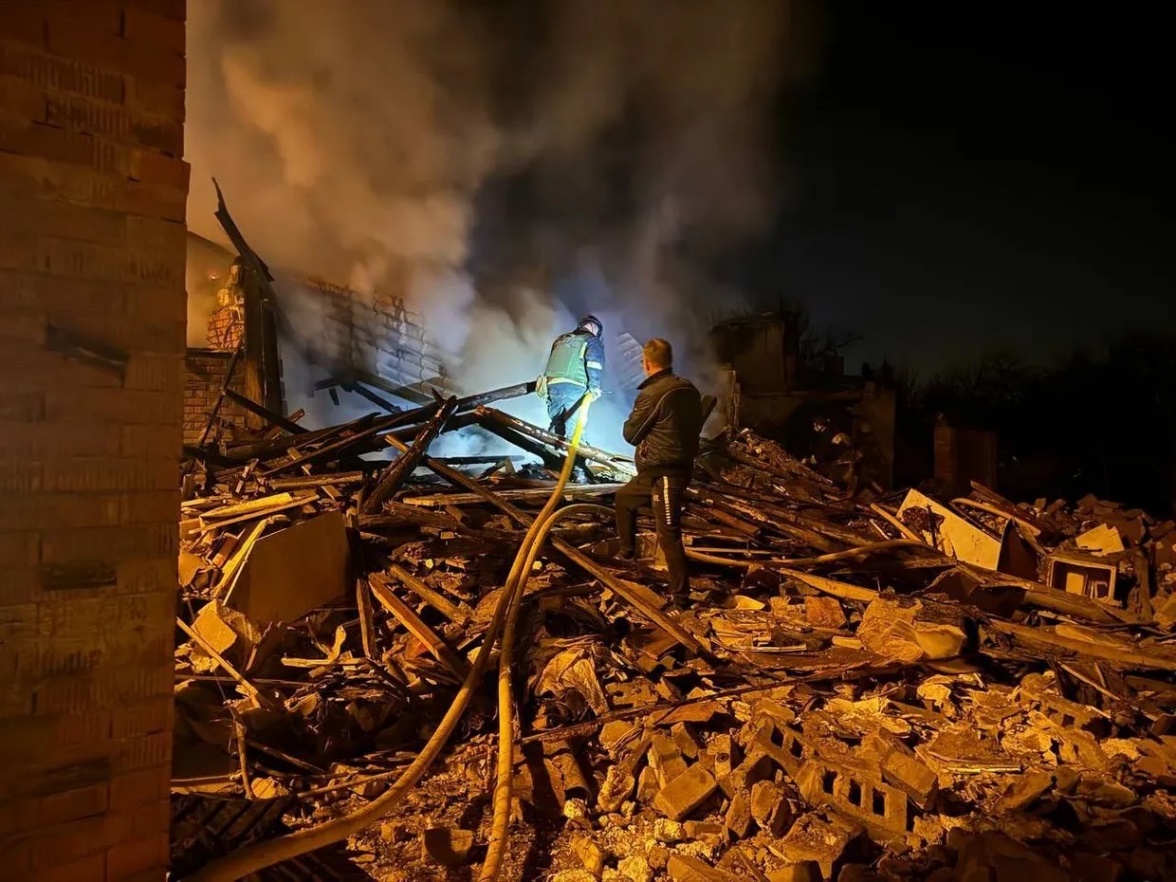 A Russian drone attack on March 28 killed four people and injured at least 21 in the city of Dnipro, sparking a large fire at a hotel and restaurant complex as well as 11 private residences. (Serhii Lysak / Dnipropetrovsk Oblast Military Administration)
A Russian drone attack on March 28 killed four people and injured at least 21 in the city of Dnipro, sparking a large fire at a hotel and restaurant complex as well as 11 private residences. (Serhii Lysak / Dnipropetrovsk Oblast Military Administration)
Over 20 drones targeted the city, though most were shot down. Several high-rises were damaged in the strike, according to local authorities. Over 150 emergency workers and 40 units were dispatched to the site of the attack.
Dnipro, Ukraine’s fourth-largest city, has served as a key logistics and humanitarian hub during the full-scale war and has been a frequent target of intensified Russian attacks. The attack came despite ongoing ceasefire negotiations and demonstrates Russia’s continued targeting of Ukrainian civilian infrastructure.
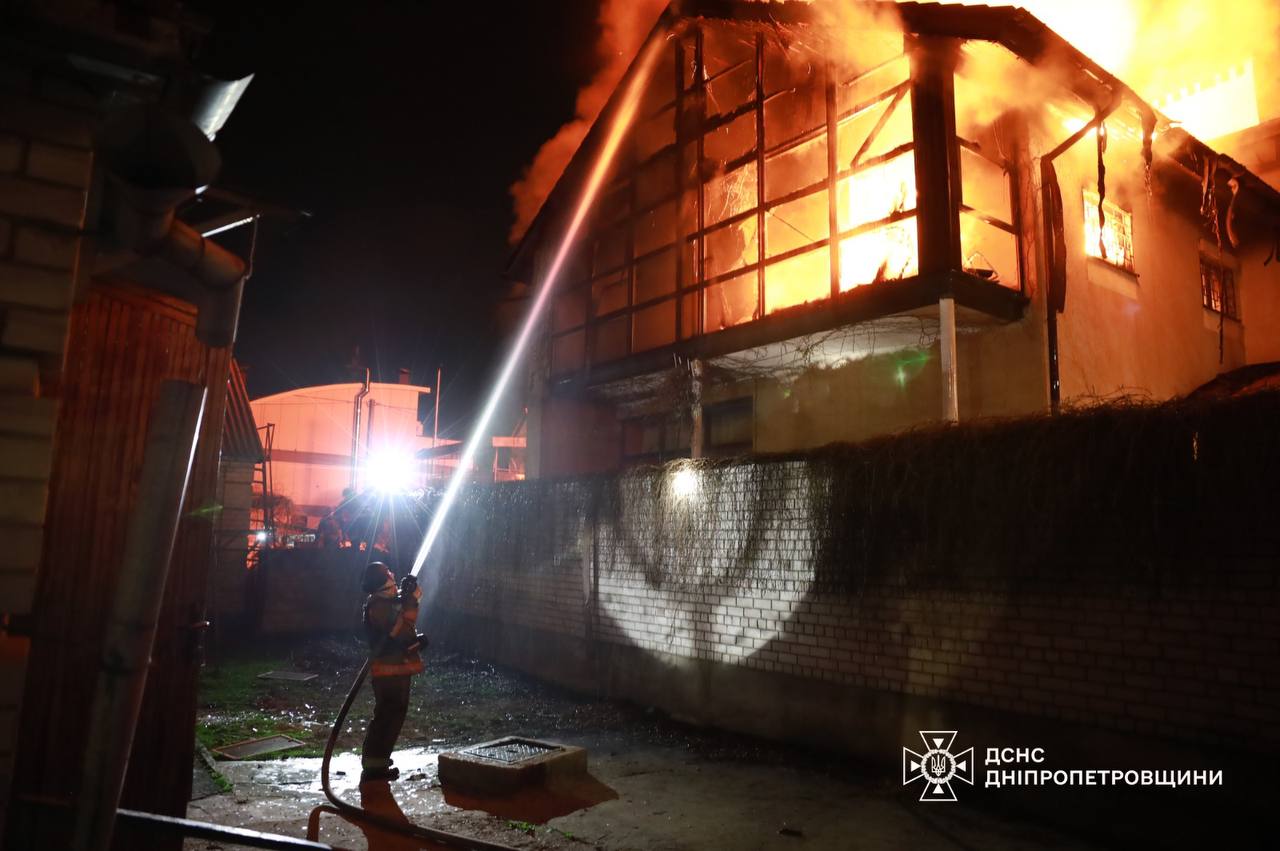 Several fires broke out in the city of Dnipro late on March 28 following Russia’s drone attack. (Ukraine State Emergency Service/Telegram)
Several fires broke out in the city of Dnipro late on March 28 following Russia’s drone attack. (Ukraine State Emergency Service/Telegram)
Overnight on March 27-28, Russian forces conducted an even larger series of drone strikes against Ukraine. The Ukrainian Air Force reported that Russia launched 163 Shahed and other strike and decoy drones from the directions of Bryansk and Kursk cities; Millerovo, Rostov Oblast; Primorsko-Akhtarsk, Krasnodar Krai; and occupied Cape Chauda and Hvardiiske, Crimea. Ukrainian forces downed 89 drones, while 51 decoy drones became “lost,” likely due to Ukrainian electronic warfare interference.
Cyberwar Front: Ukrzaliznytsia Recovers from “Unprecedented” Attack
Ukrainian Railways (Ukrzaliznytsia) announced on March 27 that it had resumed online ticket selling services after what it described as the “largest cyberattack” the company had ever suffered. The company’s website and application had become unavailable on March 23 over what was initially described as a “technical failure” but was later confirmed to be a “large-scale and sophisticated cyberattack” carried out by “the enemy.”
“The primary goal of the attackers, obviously, was to stop the rail from running,” Oleksandr Shevchenko, deputy head of Ukrzaliznytsia, told the Kyiv Independent. “Because the railway in Ukraine these days transports everything from the military and the wounded to the evacuation of the civilians, and international diplomats as well.”
It took “89 hours of non-stop work” to get the computer systems back online, though the company’s servers continue to struggle with demand. Despite the attack, 96% of Ukrainian railway trains still arrived on time. To manage the situation, staff from less busy stations were brought in to handle ticket sales manually, with some employees working continuously for several days, spending nights at stations.
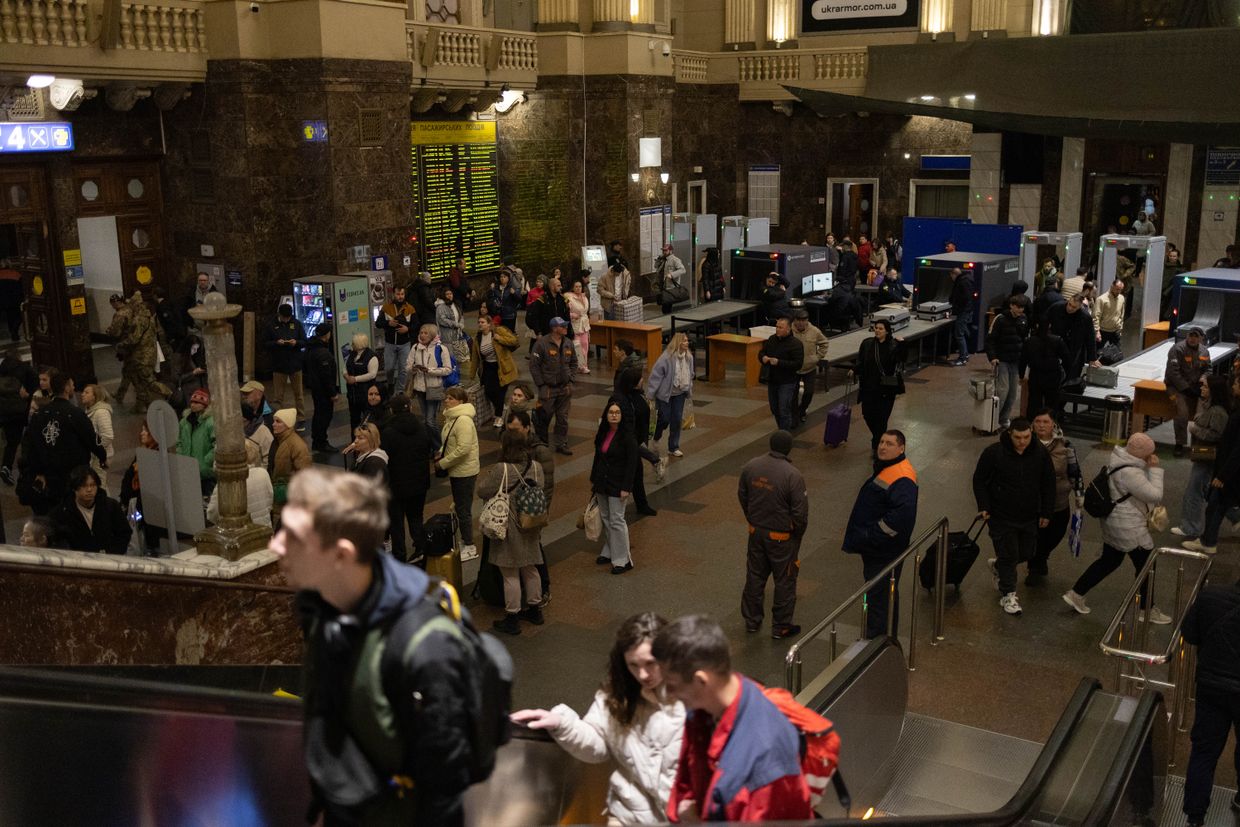 Railway station in Kyiv, Ukraine. (Anna Donets / The Kyiv Independent).
Railway station in Kyiv, Ukraine. (Anna Donets / The Kyiv Independent).
The incident highlights the ongoing cyber dimension of the conflict, with both Ukraine and Russia employing digital warfare tactics throughout the full-scale war. Ukraine’s parliament recently passed a bill aimed at strengthening the country’s cyber defense capabilities, introducing a national system for responding to cyberattacks and incidents, including the creation of cyber defense units within state institutions and critical infrastructure.
International Financial Support: IMF Approves $400 Million for Ukraine
The Executive Board of the International Monetary Fund (IMF) approved the disbursement of $400 million in funds for Ukraine via the Extended Fund Facility (EFF), the IMF announced on March 28. The funds represent the latest tranche of the EFF program, which will provide Kyiv with $15.6 billion in budget support over four years. With the additional $400 million in funding, the program has now distributed $10.1 billion in financing to Ukraine.
“Russia’s war in Ukraine continues to take a devastating social and economic toll on Ukraine,” IMF Managing Director Kristalina Georgieva said in a press statement. “(Ukraine’s) economy has remained resilient, but the recent growth slowdown is expected to persist in 2025 due to headwinds from energy needs and a tight labor market. Contingency planning is key to enable appropriate policy action should risks materialize.”
External financing is critical for Ukraine as it faces mounting economic pressure from Russia’s full-scale invasion. Kyiv received $42.5 billion in foreign aid last year, but the Finance Ministry has said that the amount needs to increase by at least $12 billion for 2025.
Sanctions and Diplomatic Pressure: EU Prepares New Package
The European Union is preparing its 17th package of sanctions against Russia amid Moscow’s demands for lifting some Western restrictions as part of its ceasefire terms, according to media reports citing unnamed EU diplomats. Work on the new round of sanctions has started and is “at a very early stage,” with the European Commission expected to present its proposals in early summer.
“Keep up the pressure on Russia. It was very clear that the sanctions stay in place. What we want is a just and lasting peace agreement. That is the goal,” European Commission President Ursula von der Leyen said following the “Coalition of the Willing” summit in Paris.
The European Commission’s Foreign Affairs Spokesperson Anitta Hipper emphasized that Russia’s “unconditional withdrawal” from Ukraine is one of the main preconditions for changing or lifting EU sanctions. This stance directly conflicts with Moscow’s demand that the Black Sea ceasefire will take effect only if the West lifts sanctions on Rosselkhozbank and other financial institutions linked to food trade, restoring their access to the SWIFT payment system.
Russian Gas Industry Feels the Pinch: Production Drops 11.3%
Russia’s natural gas production saw a significant decline in February, dropping 11.3% year-on-year to 57.2 billion cubic meters (bcm), according to Russian media outlet Kommersant. The sharp decline is primarily attributed to Ukraine halting Russian gas transit through its territory on January 1 after the expiration of a 2019 transit agreement.
The move has severely impacted Gazprom, Russia’s state-owned gas giant, whose production fell 13.2% year-on-year to 38.2 bcm in February. With the loss of Ukrainian transit routes, Gazprom now relies almost entirely on the TurkStream pipeline, which has an annual capacity of just under 16 bcm—significantly restricting Russia’s ability to export gas to Europe.
Beyond Gazprom, other major Russian energy companies also reported declines in production. Novatek reduced its output by 1.5%, Lukoil’s gas production fell by 13.3%, Rosneft recorded a 14% drop, and Gazprom Neft reported a decline of 8.3%. Despite the slump, Russian price agencies told Kommersant that gas production in 2025 is expected to remain at 2024 levels as Moscow shifts its focus toward expanding pipeline exports to China and increasing LNG shipments.
Looking Ahead: Increasing Complexity in Path to Peace
As March draws to a close, the path to peace in Ukraine appears increasingly complex. Putin’s renewed delegitimization campaign against Ukraine’s government, along with his demand for a UN-supervised temporary administration, represents a significant escalation in Russia’s rhetorical approach to negotiations. These demands, combined with the Kremlin’s insistence on addressing the so-called “root causes” of the conflict on Moscow’s terms, suggest that Russia remains committed to its maximalist position despite engaging in ceasefire talks.
The European “Coalition of the Willing” is taking concrete shape with the upcoming meeting between Ukrainian, British, and French military officials to discuss troop deployments. This initiative represents a potentially significant shift in European strategic thinking, with countries willing to consider military presence in Ukraine even without direct U.S. participation.
On the battlefield, the intensification of Russian assault operations in Zaporizhzhia and Ukrainian advances in Belgorod indicate that both sides continue to seek tactical advantages even as diplomatic efforts proceed. The fragile energy infrastructure ceasefire and the increasing complexity of monitoring violations highlight the challenges of implementing even limited agreements in the current environment of deep mistrust.
As the conflict enters its fourth year, with over 46,000 Ukrainian soldiers and at least 100,000 Russian soldiers confirmed killed, the human cost continues to mount. The return of 909 fallen Ukrainian defenders and the ongoing abduction of Ukrainian children underscore the profound human tragedy at the heart of this war—a tragedy that negotiators in Riyadh, Paris, and elsewhere must ultimately address if any lasting peace is to be achieved.
